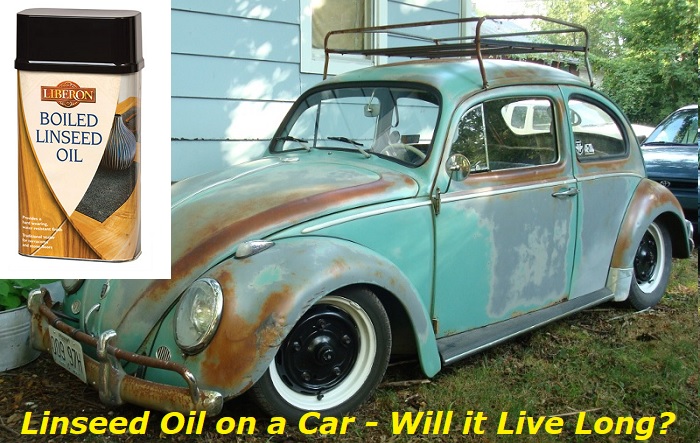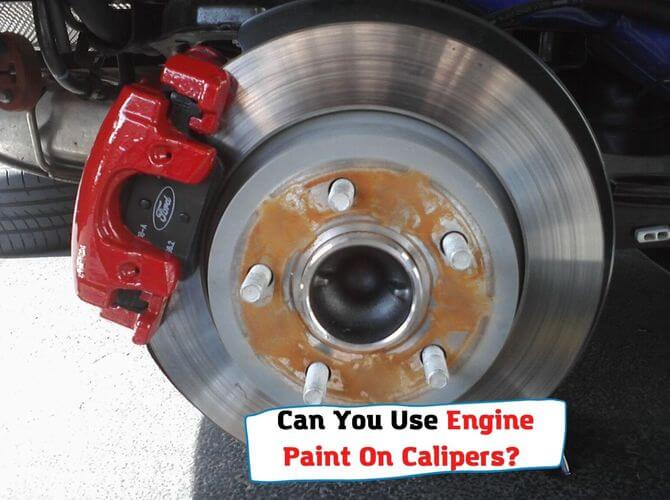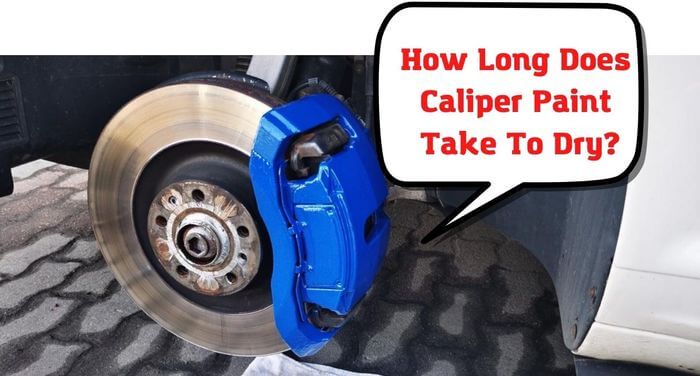Linseed oil is a colorless to almost yellowish oil commonly known as flaxseed oil. The latter is obtained from the ripened or dried seeds of the flax plant. We’ll be undergoing an investigation on how long Linseed oil lasts on a car.
Linseed oil is an excellent finish for vehicles and hardwood floors due to its easily obtained properties and multi-purpose nature. While these are excellent properties of linseed oil, it must be noted that one should be very careful while working with linseed oil as it can lead to severe hazards like flammability and cause skin irritation.
The amount of linseed oil being used on a car should be measured accurately to prevent unwanted spills that can harm it. This article will delve into how long linseed oil lasts on a vehicle, its properties, and its grades.

What is Linseed Oil?
Linseed is the same as flaxseed oil. It is a very potent and beneficial natural oil used as a preservative for concrete, wood, and metal. It is also an ingredient in varnishes, stains, and paints.
Linseed oil prevents the deterioration of metal, wood, and concrete surfaces, prolonging these products’ life. In addition, adding solvents like Japan drier, mineral spirits, and turpentine would enhance the linseed oil drying time making it more effective.
Linseed oil has a high content of unsaturated esters, making it susceptible to drying, resulting in the rigidification of the material. Therefore, all linseed oil-based products should be stored in airtight containers to prevent premature drying.
Modified Grades of Linseed Oil
Boiled Linseed Oil
Boiled Linseed oil is made from the combination of stand oil, raw linseed oil, and metallic oil drying agents that act as catalysts to accelerate drying.
Centuries ago, linseed oil was boiled with litharge, also known as lead oxide, to give a product we know to be ‘boiled linseed oil.’
This litharge or lead oxide is an alkaline substance that forms lead ‘soaps’ which promotes the rigidification of the linseed Oil by reaction with oxygen. It should be known that heating shortens the drying time of linseed oil. The boiled linseed oil is thick and dark and can be used for exterior work.
Double Boiled Linseed Oil and Pale Boiled Linseed Oil are the two types of boiled linseed oil. The double-boiled linseed oil requires a thinning agent like Naptha or Turpentine and dries rapidly, making it essential for exterior work.
On the other hand, the pale boiled linseed oil is pretty similar to the leading boiled linseed oil though it doesn’t possess dark color and can be used for painting plastered surfaces.
Raw Linseed Oil
Raw Linseed oil is an unprocessed base oil devoid of thinners or driers. It requires more time for drying and can be used for interior work. It is thin and pale and is mainly used as a feedstock for producing boiled linseed oil.
It can be used to treat the leather flat belt drive to reduce slipping and sometimes to oil cricket bats to increase surface friction. Unfortunately, raw linseed oil doesn’t dry well or quickly and hence can’t be considered a drying oil.
Stand Oil
The most common way to make stand oil is to heat linseed oil at almost 300°C for a few days in the absence of oxygen. It is a highly viscous product that gives a uniform coating that dries to a more elastic coating than plain linseed oil.
Materials coated with stand oil are less prone to yellowing than coatings made from other modified linseed oils.
Boiled Linseed Oil on Cars
Boiled Linseed Oil (BLO) protects metals from oxidation that leads to rusting. Applying boiled oil linseed to your vehicle will protect and beautify the metal surface.
It can be used for working tools like chisels, screwdrivers, block planes, etc. Boiled linseed oil is considered one of the most effective linseed oils since it dries out quickly depending on the weather. However, it can cause concern, mainly if it’s being used in a humid climate.
It tends to mildew in a humid environment when applied to the exterior surfaces. Before coating, ensure you test a small area on the metal surface to see if it mildews or not. You can easily clean it off if it does, so there’s no big problem.
How Long Does Boiled Linseed Oil Last on a Car?
Boiled Linseed oil is a perfect choice for old faded paint. The BLO protects car bodies from rusting more. A coating of linseed oil can offer maximum anti-rust protection for up to a year. If you’re coating a bare car with boiled linseed oil, it can last up to 7 months.
Painting over boiled linseed oil can be pretty problematic. This should be avoided because the solvents of the paint can activate the linseed oil, thereby causing a huge problem. In addition, all the solvents in the paint will dissolve the linseed oil even if it is already dried.
The result of this will be paint failures like splotchy appearances and peeling. On the other hand, boiled linseed oil gives a fine glossy finish to the car, making it look brand new. In addition, using boiled linseed oil coating on a car surface will reduce the potential for bird droppings, tree saps, and tar from sticking to the car paint.
Main Pros of Using Boiled Linseed Oil
Boiled linseed oil is a high-quality product that brings shine to metal and wooden surfaces. Here, we’ll list the advantages of using boiled linseed oil:
- Boiled linseed oil creates maximum protection from rust.
- It gives a deep glossy look after proper application, making the car look brand new.
- Most branded boiled linseed oils sold in the US are eco-friendly and natural.
- When the boiled linseed oil is adequately dried, it protects the metal from reacting to temperature changes and other factors.
Common Mistakes People Make While Using Boiled Linseed Oil
Here are some prevalent mistakes made while using the boiled linseed oil while coating:
- Usage of a brush instead of a rag. Using a brush while coating will make applying the boiled linseed oil harder, and it will take much of your time.
- Improper disposal of the used rags. The boiled linseed oil is flammable, and there have been situations where the rags soaked with boiled linseed oil were spontaneously put on fire. Therefore, it is advisable to burn or adequately dispose of the rags after use.
- Not wiping off the excess boiled linseed oil after application. It is essential to wipe off the extra fat. Otherwise, it will take a long time before applying the subsequent coating.
- Leaving the can of the boiled linseed oil open. It is essential to seal the can of the boiled linseed oil thoroughly, even while you wait for the next layer to be applied. If you leave the can open, the BLO will harden almost instantly due to its exposure to air.
How To Remove Boiled Linseed Oil from Your Car
Cleaning boiled linseed oil can be quickly done using soap and water. This is the most straightforward solution for it. Here are some steps to take while removing boiled linseed oil from your car:
- Rinse the surface of the car with running water.
- Use an all-purpose liquid detergent, and make sure you apply a thin layer of it and then mix it with some water. Rub this gently on the car surface without scrubbing too hard.
- Rinse the surface thoroughly with warm water, then dry it off.
Boiled Linseed Oil Safety
We have emphasized that boiled linseed oil can simultaneously combust if stored improperly. This happens when the chemical composition of the boiled linseed oil reacts with the surrounding oxygen.
This reaction generates heat, which can be pretty intense in certain circumstances and lead to combustion. Smaller quantities of boiled linseed oil create less heat, while a more significant amount generates tremendous heat.
How to Avoid Combustion Due to Exposed Boiled Linseed Oil
The most popular source of boiled linseed oil fires arises from used rags soaked in BLO. The wadded-up rag is usually thrown into the trash after use, and some materials like papers, leaves, etc. can be found in the trash.
Since the rag is washed-up, it creates more heat due to the absence of air. When this happens, the rag heats up to the flash point of the surrounding materials and starts a fire.
Below are some ways you can avoid a fire hazard:
- Store Boiled Linseed oil in metal containers. For long-term storage, it is essential to store BLO in tightly sealed metal containers though you can pour it into a plastic container for temporary use.
- Rags soaked with boiled linseed oil should be laid on a non-flammable surface, away from combustible items, until they are completely dried. You can also place the rags in a metal container with water.
Boiled linseed oil provides maximum protection against rust for your cars. Of course, it has some disadvantages, but it is pretty easy to use and efficient in terms of safety. We hope you get some interesting facts about linseed oil from our article.
- Can You Unmix Paint: Techniques, Consequences, Alternatives - February 23, 2024
- Does Primer Need to be Mixed? Effective Primer Application - February 22, 2024
- How to Make Old Paint Usable Again: Retrieving and Preserving Paint - February 21, 2024



